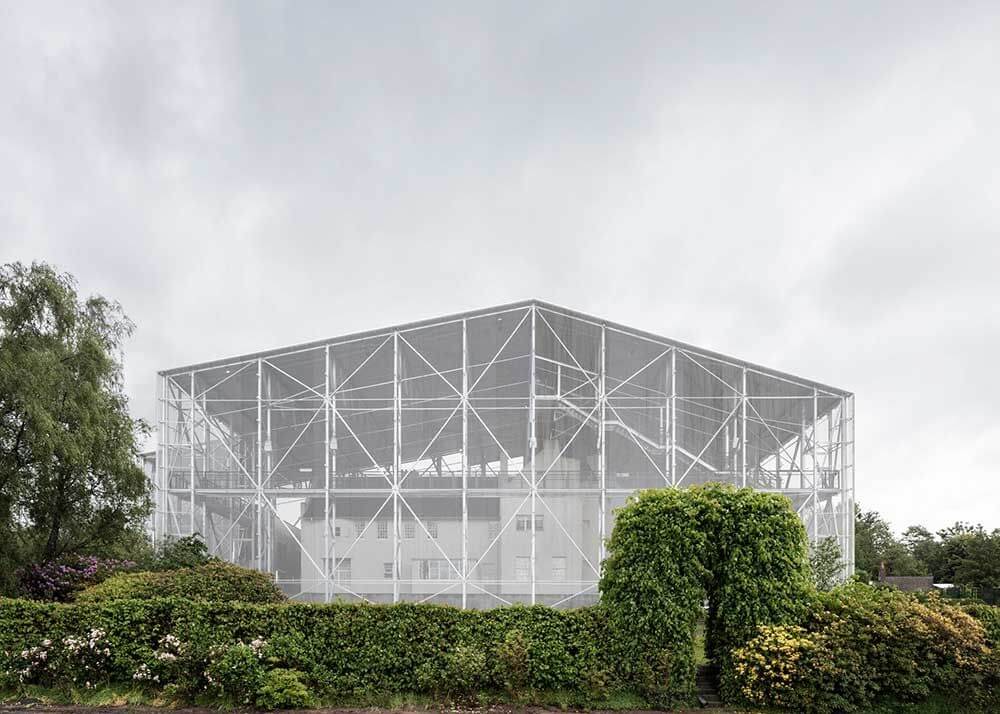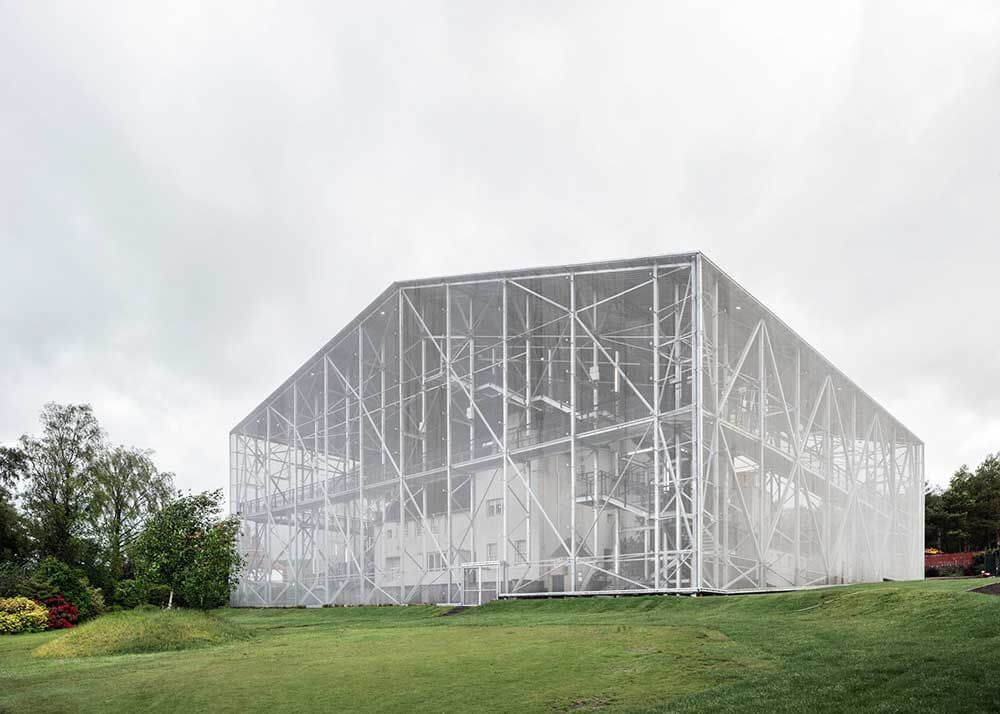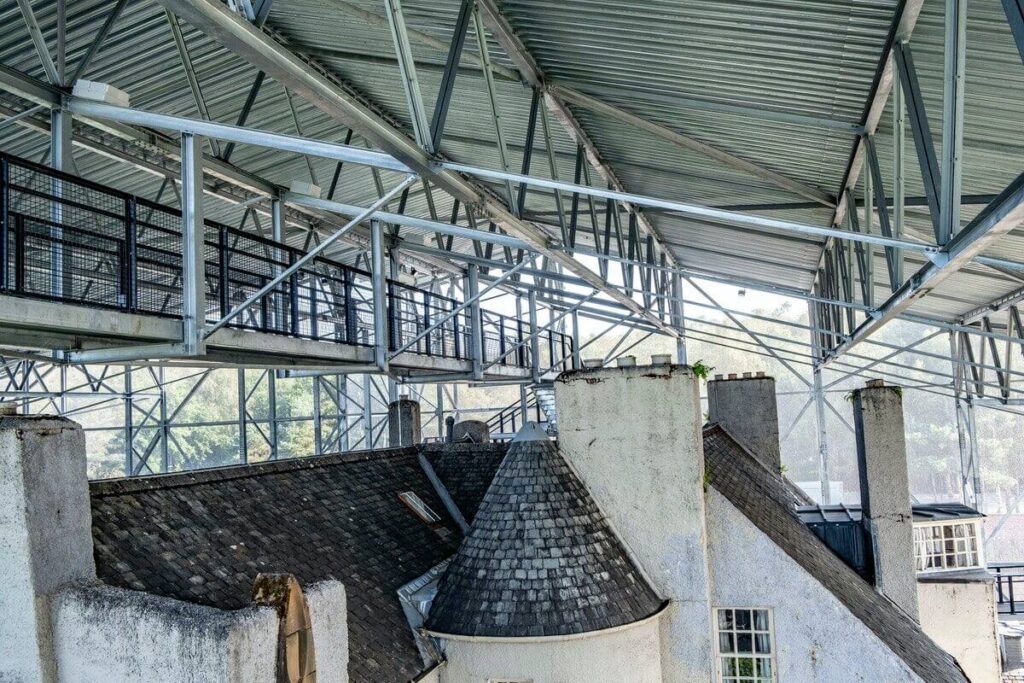Charles Rennie Mackintosh (born 7 June 1868 ) was a Scottish architect, designer and artist. His artistic approach had much in common with European Symbolism. His work, alongside that of his wife Margaret Macdonald, was influential on European design movements such as Art Nouveau and Secessionism and praised by great modernists such as Josef Hoffmann. He is among the most important figures of Modern Style.
The Hill House

©2002, Jeremy Atherton.
The Hill House is arguably Charles Rennie Mackintosh’s residential masterpiece, one of Scotland most acclaimed buildings, Grade A listed, and a seminal part of early 20th century European architecture. A hybridisation process has led to some fundamental long-term problems of prolonged water damage. The National Trust for Scotland have determined that a major conservation project is needed to avoid irreversible destruction.
Image Courtesy of Carmody Groarke
Rather than incarcerate the house away from view whilst the restoration is undertaken, a more radical approach to active conservation has been taken. As an integral part of this conservation process, which could take up to ten years, a ‘big-box’ temporary museum to contain and protect The Hill House as an ‘artefact’ has been built. This allows the house to dry out and be conserved, whilst enabling visitors to see the conservation process first hand and maintain public access to the historic interiors.
Photos: scape-scotland.co.uk
The new museum’s architectural identity is that of a huge, abstracted garden pavilion whose walls are covered entirely with a steel chainmail mesh. The galvanized cross-braced steel frame is designed to be grounded with minimum impact on the existing terraced-garden.
This semi-permanent enclosure provides a ‘drying room’ shelter to the original house, whilst its rain-soaked existing construction is slowly repaired. The chainmail reduces rain penetration while allowing airflow for the building to breathe. This elegant enclosure also allows uninterrupted views, night-and-day, to and from the garden to Mackintosh’s architectural icon.
Constructed in twenty-five weeks, galvanized building elements were pre-fabricated to reduce the impact of site construction to the historic building. Alongside the environmental benefits of saving the historic house, the architects ensured that materials used can be recycled or reused once the building is removed and conservation complete.
About the Author:

Bruno Dursin – Managing Director at Believe in Steel. Bruno has more than 30 years of experience in promoting steel & steel solutions. His clients benefit from his extensive network within the building industry.








